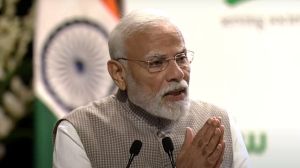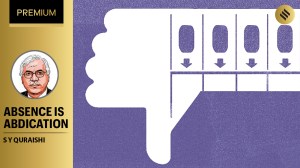New, upgraded and high-tech network system at GMSH-16 to reduce footfall, patients’ waiting time
While some dispensaries have mini-labs, as part of a hub and spoke model, the samples for tests are sent to GMSH-16 daily, and so an increased footfall for getting test reports from the hospital.
 With the new network in place, the need for a physical card for registration will also be omitted over time, with the registration number and other details of the patient uploaded digitally and available to the doctor on his computer.(Representational Image/File)
With the new network in place, the need for a physical card for registration will also be omitted over time, with the registration number and other details of the patient uploaded digitally and available to the doctor on his computer.(Representational Image/File)With a new, upgraded and high-tech network system, GMSH-16 will now have a new system where all test reports will be sent to the patients’ phone numbers or emails, reducing the footfall, waiting time of patients and easing the process.
“The LAN tender is complete, as we need a high-tech system and a robust network system in a hospital like GMSH-16 to go paperless, and within the next three months, this important project of digitisation will be complete. The benefit will largely be for patients, who won’t have to stand in long queues to get their diagnostic reports, which will be sent to them on their phones and emails. These will also be accessible to doctors on their computers, ensuring a health record of patients, resulting in ease, and very importantly, reducing the footfall in the hospital,” explains Dr Suman Singh, Director, Health Services, Chandigarh.
While some dispensaries have mini-labs, as part of a hub and spoke model, the samples for tests are sent to GMSH-16 daily, and so an increased footfall for getting test reports from the hospital. With the new network in place, the need for a physical card for registration will also be omitted over time, with the registration number and other details of the patient uploaded digitally and available to the doctor on his computer. The pilot project has already been completed in all the 48 Ayushman Arogya Mandirs (upgraded Health and Wellness Centres), under the Ayushman Bharat Initiative, with all going paperless in phases. The range of services has been expanded here to include care for non-communicable diseases, oral, eye and ENT care, and free diagnostic services and essential drugs.
Here, the E-registration of the patients is in place, with a token system and display of token numbers also planned, so patients don’t crowd outside doctors’ rooms and can sit and wait for their turn. To improve efficiency, the prescription given by the doctor will also be sent to the pharmacist directly, who will then dispense the medicine and provide the patient with a slip of the same.
The OPD in the hospital operates from 8 am to 2 pm , with the daily OPD numbers about 3,500 patients from across the region, plus attendants, with the emergency also witnessing a steady increase, with an average of 400 patients and in the season of dengue, viral fevers, the numbers almost double. The 500-bed district hospital has referral cases from across the region, with the highest of about 350 to 400 in the gynaecology department itself, and the digitisation aims to bring in more efficiency and comfort for patients.












